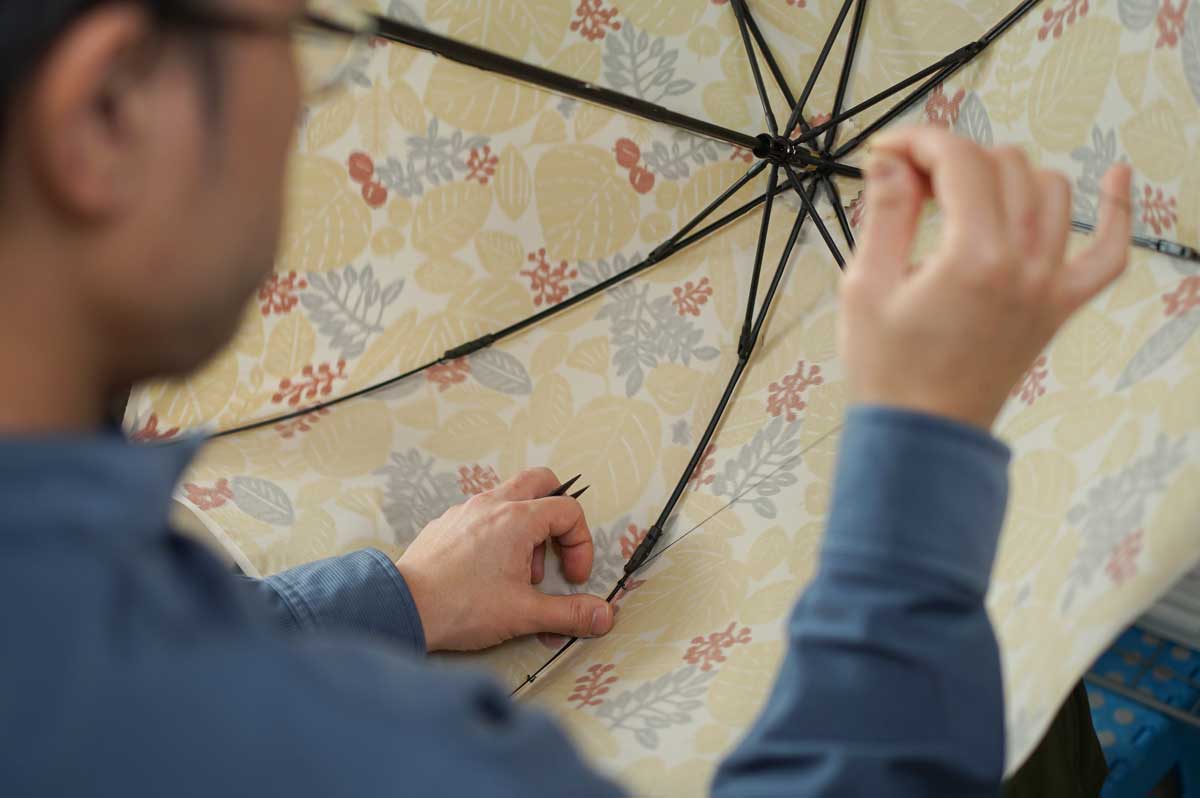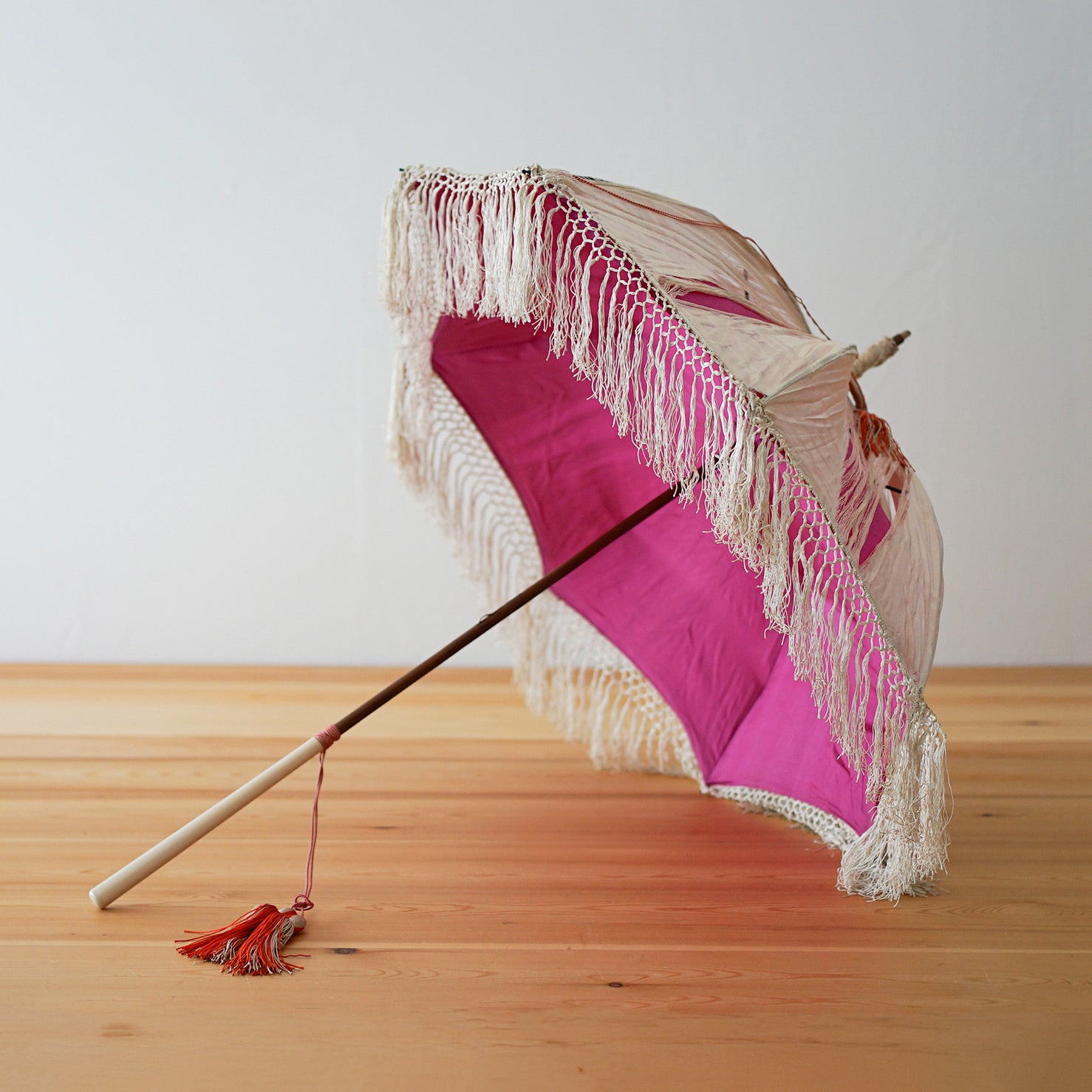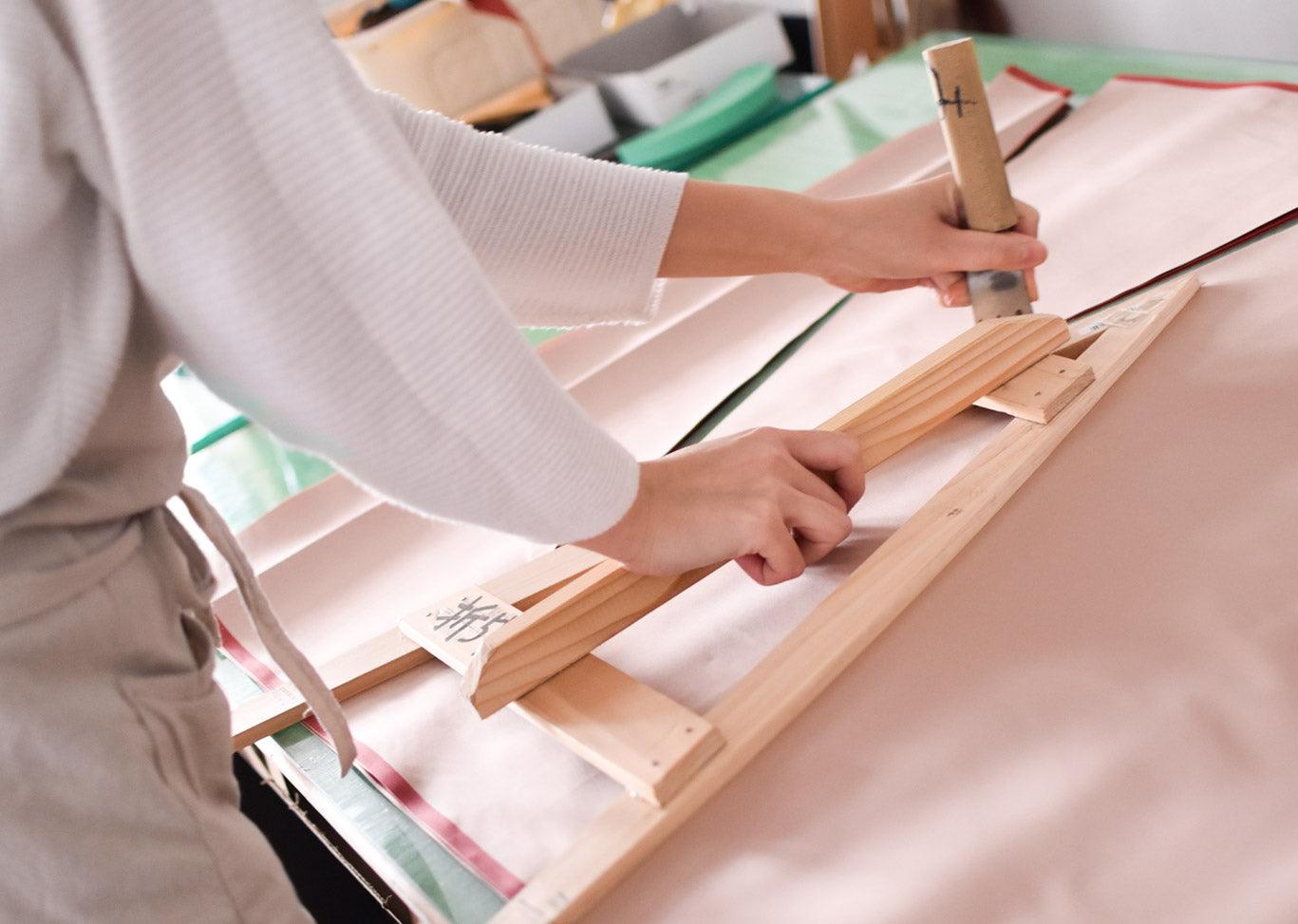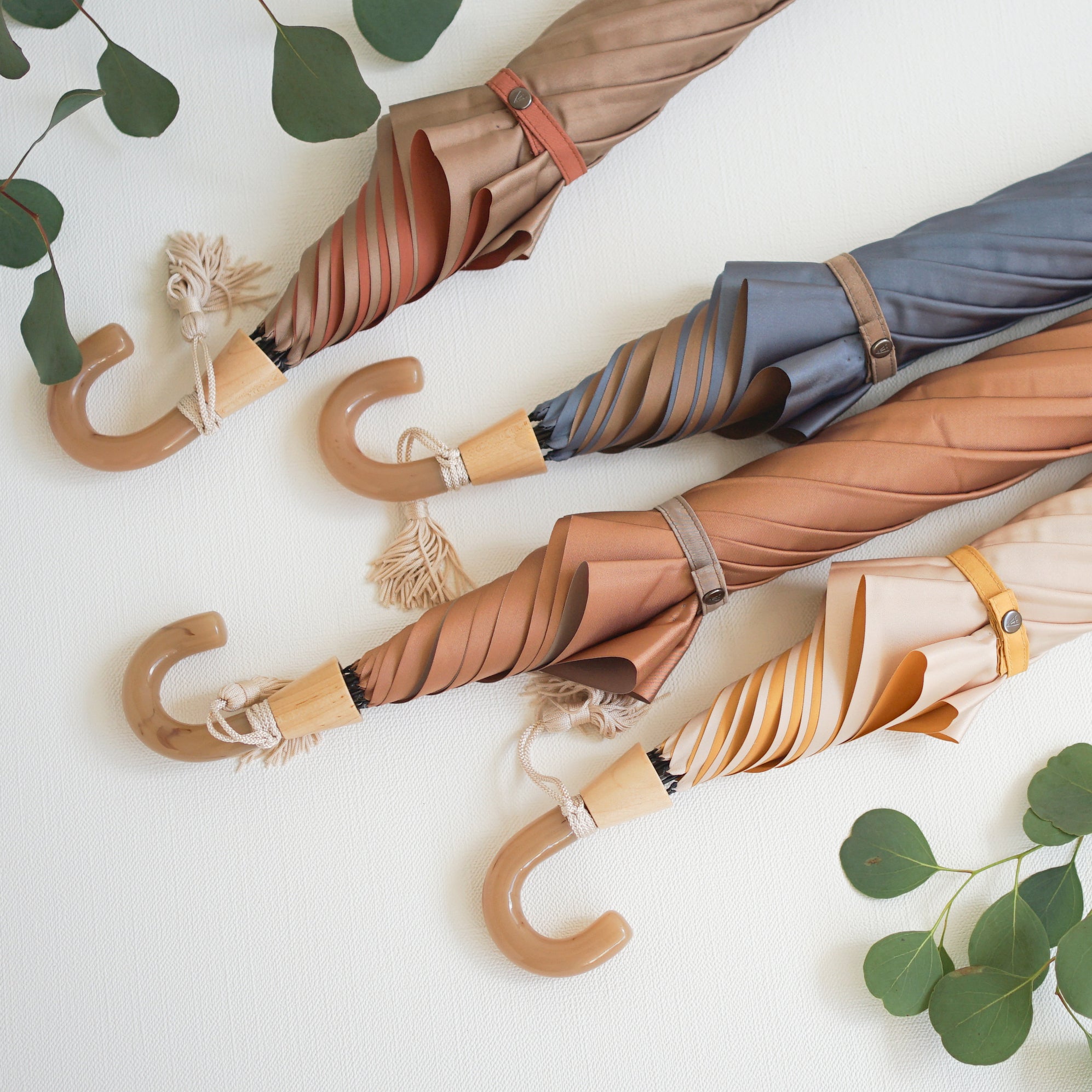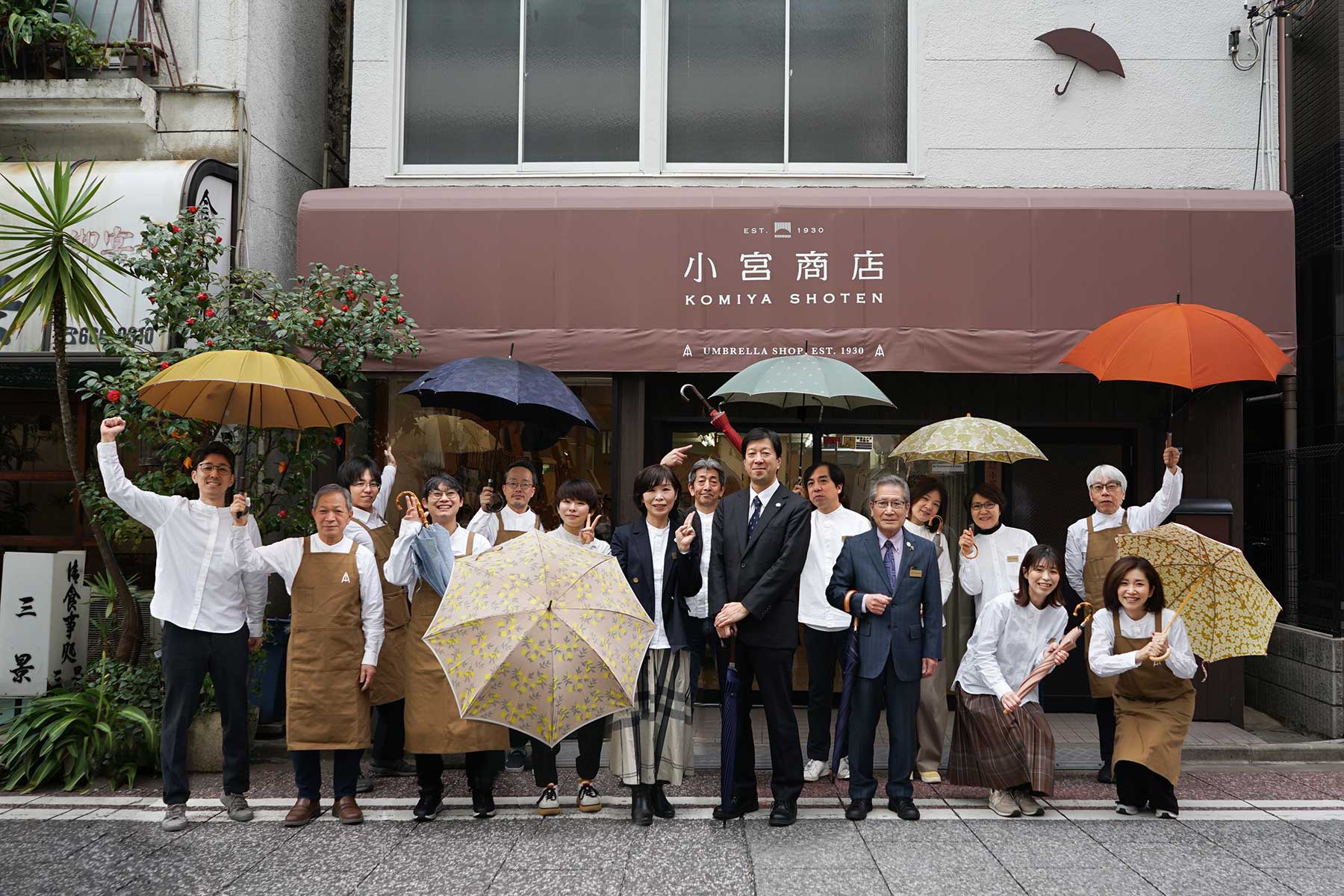
One day in May, we got off at Katase-Enoshima Station.
The purpose of the trip was to meet Matsui Chie, a descendant of "Senjoko Sakamoto Shoten," the first company in Japan to successfully manufacture domestically produced Western-style umbrellas in Ginza, Tokyo. Heavy rain had fallen since the morning, and the area around Enoshima, a popular tourist destination, was deserted, as if to deny its weekend bustle. The interview staff consisted of four people: President Komiya, who regularly collects materials on Western-style umbrellas and examines their history; Mitsuda, in charge of quality control; Orita, in charge of branding; and Tanaka, in charge of manufacturing. We made a list of not only the Western-style umbrella culture of the time, but also points that were unclear from the materials we had on hand, and we had detailed meetings in advance before heading out on the day.
"A long time ago, my family sold Western-style umbrellas. We had a shop in Ginza called Sakamoto Shoten."
It is truly a miracle that this opportunity was given to me by a casual comment from Ms. Yoshiko Itaba, who came to request a repair as a customer. Ms. Itaba is the niece of Ms. Chie Matsui, and despite our unreasonable request, she kindly arranged for today's interview.
Komiya Shoten is always working to dig deep into and systematize the culture and history of Japanese umbrellas. Simply put, it is important to learn from the past and create something new. Without a deep look into this aspect, we cannot achieve tough "manufacturing" that can be passed on to the next generation. A single comment from a customer who happened to visit the store gave us a great opportunity to give shape to the mission that all of Komiya Shoten's employees hold. This may sound like an exaggeration, but for us, this is nothing short of a miracle.

We also collect and research valuable items from the Meiji period, such as parasols and umbrella sewing machines.
Ms. Itaba and her husband arrived by train earlier than the agreed time.
We were guided to the Katase Convent of the Sisters of St. Paul of Chartres, located less than a five-minute walk from the station. It was the day of the sports day at the neighboring Shonan Shirayuri Gakuen Elementary School, and colorful national flags were displayed in the schoolyard. We were shown to a room prepared for this interview and exchanged greetings with Mr. and Mrs. Itaba, and while we were doing so, Chie Matsui herself arrived.
He was 96 years old, but his bright smile and lively personality left a strong impression on me. He spoke carefully about his past experiences, using handwritten materials he had compiled for this occasion.

Currently, Chie is a nun at Katase Monastery where she spends her days in prayer and faith.
Matsui Chie is the granddaughter of Sakamoto Yushichi, the sixth generation owner of Senjoko Sakamoto Shoten, which successfully mass-produced Western-style umbrellas in Japan. Yushichi's efforts were not limited to the manufacturing process; he can also be said to have pioneered the business model of domestic Western-style umbrella manufacturers that continues to this day, and his style has hardly changed since. As a slight aside, around the same time, Kono Torakichi, who mainly dealt in Western-style umbrella ribs, succeeded in domestically producing the U-shaped cross-section rib developed by the British company Fox. It is heartwarming to think that Sakamoto Yushichi and Kono Torakichi, the superstars who built the foundations of Japan's Western-style umbrella business, struggled at the same time.

Chie prepared many precious photographs from that time and told us all about "umbrellas" that she could remember, along with her own memories from her childhood. She talked about how they paraded through the streets of Ginza holding the umbrellas they sold as a promotion, how many of the customers were of high social standing, proving that umbrellas were still a luxury item at the time, how even as a child she could tell the quality of the texture of the fabrics, even though there were only a few colors available, and how the funeral of Yushichi, who died during the war, was a simple affair, but attended by many people and extremely lively... Chie's tone was so smooth and gentle that I forgot the time passing as I listened.
In addition to the umbrellas, the stories he told us about life at the time were even more fascinating. He told us how he was bought pencils at Ginza Itoya, which was located right next to the store, and how after the Great Kanto Earthquake, Yushichi moved to Hongo Komagome, where Chie had lived as a child. This made his days with the family who lived in the neighborhood even more memorable. He told us that even as a child, he remembers how when World War II began, bomb shelters were dug in the beautiful Kyoto-style garden and there was chaos in every aspect of life. After the war, land was taxed based on the number of residents, and because it was so expensive, it became common for every house to have boarders, giving us a glimpse into the unstable financial situation in Japan at the time.
 "My grandpa (Yushichi, on the far right) dressed up as Santa Claus and handed out presents. We popped crackers and it was fun."
"My grandpa (Yushichi, on the far right) dressed up as Santa Claus and handed out presents. We popped crackers and it was fun."However, as for the "umbrella" that we had prepared, I was unable to delve deeper into it, which may be a one-sided statement. Since we were still very young, I get the impression that it merely remained as a prop in Chie's memory. At the same time, it could be said that this is exactly why we forgot that we were doing an interview and were drawn into Chie's story. While we were talking, we were enveloped in a sense of unity, as if we were all watching a story projected on a screen in front of us. This is proof that the life that Chie has led still shines beautifully even today. Chie's sparkling eyes, like those of a young girl, told us this as she reminisced.
The memories of beautiful days that never fade. They are still alive here and now, without ever ending. The passion for "beauty" that Sakamoto Yushichi and the Sakamoto Shoten must have aimed for. Through my encounter with Chie, I felt like I was able to get a glimpse of that passion, transcending time.
 "There are a lot of girls' names that start with the character 'beauty'. I wonder if she liked this character." The feelings that Tomohichi Sakamoto entrusted to us continue to live on.
"There are a lot of girls' names that start with the character 'beauty'. I wonder if she liked this character." The feelings that Tomohichi Sakamoto entrusted to us continue to live on.Finally, we were guided into the main hall. I was nervous as I stepped inside, but it was a mysterious space where my body and mind seemed to melt into it. The atmosphere was filled with compassion and I couldn't help but see Chie's personality in it.
"Apparently, they're wondering whether to hold the sports day. The sky is getting a lot brighter though."
Prompted by Chie's laughing words, I looked out the window and noticed that the rain had completely stopped.

--Connecting beautiful memories that can be passed down through the generations.
I thought about this as I looked at the family tree that Chie showed me, which continues to grow and expand. The family tree of craftsmanship that we must connect is, needless to say, still in progress. But the connections will eventually spread, and one day they will become part of someone's beautiful memories and begin to live on... It may be difficult, but meeting Chie was a moment of hope that showed me that it is possible.
Returning to the company, we took out the Senjokoh umbrella from back then and looked at it again. The fabric is so worn that it's scary to even open it, and there are cracks and missing parts in the fine details. But strangely enough, the umbrella looks proud and even reliable. This single umbrella that has been handed down over such a long time powerfully points to the state we should aim for. After our interview, we are strongly convinced of this.

Finally, I would like to conclude this report by expressing my gratitude to Matsui Chie, Mr. and Mrs. Itaba, everyone at Katase Monastery, and everyone associated with Senjoko Sakamoto Shoten, who have built the foundation for Japan's Western-style umbrella industry, for all their efforts and cooperation in making this day possible.


